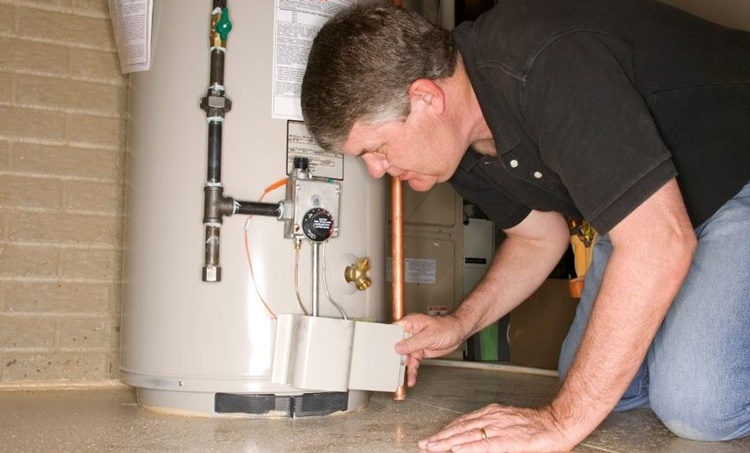Best Practices for Maintaining Your Home's Hot Water System
Best Practices for Maintaining Your Home's Hot Water System
Blog Article
Have you been on the lookout for selective information involving How to Maintain Your Water Heater & Prolong its Life?

Hot water is essential for daily convenience, whether it's for a revitalizing shower or cleaning meals. To ensure your hot water system runs efficiently and lasts much longer, routine upkeep is vital. This post supplies useful suggestions and insights on just how to preserve your home's hot water system to avoid disturbances and pricey repair services.
Introduction
Maintaining your home's warm water system may seem daunting, yet with a couple of easy steps, you can guarantee it runs smoothly for several years to find. This guide covers everything from recognizing your hot water system to DIY upkeep pointers and recognizing when to employ specialist assistance.
Significance of Maintaining Your Hot Water System
Normal upkeep not only extends the life-span of your hot water system but likewise ensures it runs effectively. Neglecting maintenance can bring about reduced efficiency, greater energy costs, and even early failure of the system.
Indicators Your Warm Water System Needs Maintenance
Recognizing when your hot water system requires attention can protect against major concerns. Watch out for indicators such as inconsistent water temperature level, strange sounds from the heater, or rustic water.
Flushing the Hot Water Heater
Flushing your water heater gets rid of sediment build-up, improving performance and prolonging its life.
Monitoring and Replacing Anode Rods
Anode poles protect against rust inside the container. Examining and changing them when broken is important.
Facility Issues Calling For Professional Assistance
Instances include significant leakages, electrical issues, or if your hot water heater is regularly underperforming.
Regular Professional Maintenance Conveniences
Specialist maintenance can include detailed evaluations, tune-ups, and making certain compliance with security criteria.
Inspecting and Changing Temperature Level Setups
Readjusting the temperature level settings makes sure optimum efficiency and safety.
DIY Tips for Upkeep
You can execute several maintenance jobs on your own to maintain your hot water system in top condition.
Looking for Leakages
Frequently evaluate pipelines and connections for leaks, as these can cause water damages and greater costs.
Understanding Your Hot Water System
Prior to diving into maintenance tasks, it's valuable to recognize the standard parts of your hot water system. Generally, this includes the water heater itself, pipelines, anode poles, and temperature level controls.
Month-to-month Upkeep Tasks
Normal month-to-month checks can assist capture small concerns prior to they rise.
Examining Stress Alleviation Valves
Testing the pressure relief valve ensures it functions correctly and prevents excessive pressure buildup.
Insulating Pipes
Insulating hot water pipes reduces heat loss and can save power.
When to Call a Specialist
While do it yourself upkeep is valuable, some problems need expert competence.
Final thought
Routine maintenance of your home's hot water system is essential for efficiency, longevity, and price financial savings. By adhering to these ideas and understanding when to seek professional help, you can make certain a trusted supply of warm water without unforeseen interruptions.
How to Maintain an Instant Hot Water Heater
Before tinkering with your hot water heater, make sure that it’s not powered on. You also have to turn off the main circuit breaker and shut off the main gas line to prevent accidents. Also turn off the water valves connected to your unit to prevent water from flowing into and out of the appliance. 2. When you’re done, you have to detach the purge valves’ caps. These look like the letter “T†and are situated on either side of the water valves. Doing so will release any pressure that has accumulated inside the valves while at the same time avoid hot water from shooting out and burning your skin. 3. When the purge valves’ caps are removed, you have to connect your hosing lines to the valves. Your unit should have come with three hoses but if it didn’t, you can purchase these things from any hardware or home repair shops. You can also get them from retail stores that sell water heating systems. Read the user’s manual and follow it to complete this task properly. When the hosing lines are connected, open the purge port’s valves. 4. You should never use harsh chemical cleaners or solutions when cleaning your unit. Make use of white vinegar instead. It should be undiluted and you’ll probably use about 2 gallons. 5. Now flush your water heater. This task should probably take about 40 minutes. We can’t give you specific directions for this because the procedure is carried out depending on the type, model and brand of your heater. With that being said, refer to the user’s manual. 6. When you’re done draining the unit, you have to turn off the purge port valves again. Remove the hosing lines that you earlier installed on each of the water valves. Put the valve caps (purge port) back in their respective places and be very careful so as not to damage the rubber discs that are found inside these caps. 7. Now that everything’s back in place, check your user’s manual again to find out how to reactivate your water heating system. 8. Once it is working, turn one of your hot water faucets on just to let air pass through the heater’s water supply pipes. Leave the tap on until water flows smoothly out of it. https://www.orrplumbing.com/blog/2014/september/how-to-maintain-an-instant-hot-water-heater/

Do you really like reading about Tips on Maintaining a Water Heater? Give feedback down the page. We'd be happy to know your ideas about this piece. Hoping that you come back again in the near future. Sharing is nice. Helping people is fun. I praise you for your time. Return soon.
Go Deal Now Report this page